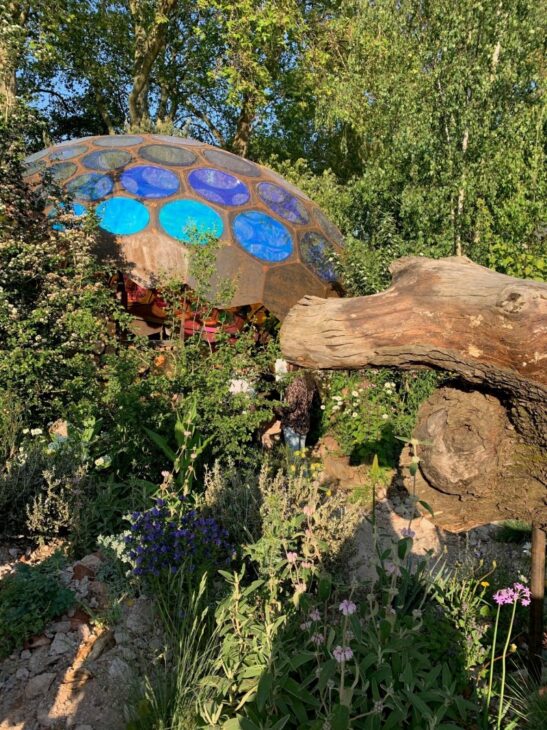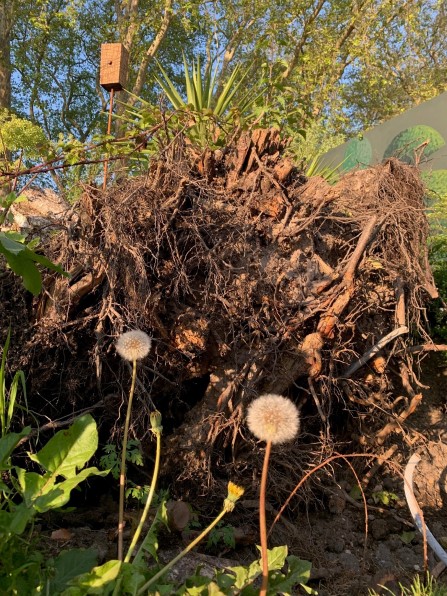Written by NBN Trust CEO, Lisa Chilton
This month’s positive take-home is about wildlife-friendly gardening and the gradual lowering of the cultural barriers – notably a deep-rooted fear of messiness – that often get in the way.
I was privileged to be invited to an evening event at the RHS Chelsea Flower Show last month. The event was to celebrate the launch of the National Education Nature Park project, in which the NBN Trust is a partner. It was my first time at the Show, so it felt like a real treat, and I arrived in plenty of time to explore the whole site.
What immediately struck me was the number of show gardens – particularly the charity gardens – that focused on native plants and naturalistic planting. Whilst the naturalness was, of course, highly contrived, with every dandelion and daisy carefully positioned for maximum aesthetic impact, it was wonderful to see the beauty, diversity and tranquillity of wildlife-friendly gardens showcased at such a high-profile and influential event.

Foremost amongst these displays, not surprisingly, was the Royal Entomological Society’s garden. Designed as “a garden for insects and insect science”, it was inspired by the diversity and raw beauty of brownfield sites. Gravel, rubble and dead wood surrounded a rust-coloured outdoor laboratory resembling a giant compound eye. Hazel and Hawthorn were joined by Viper’s Bugloss and Pygmy Borage in a hand-crafted community of more than 100 pollinator-friendly plant species. Insect surveys were taking place throughout the week to identify which plants attracted the most insect activity, and this culminated in a recommendation to the RHS to add Crimson Clover and Tree Germander to its list of pollinator-friendly plants. Importantly, despite the garden having the natural flamboyance (aka messiness – “You say tomato..”) of an archetypal wildlife garden, it was buzzing with human visitors as well as insects. The crowds were several people deep around the perimeter of the garden and there were eager queues waiting to speak to the RES staff, who were all bedecked in “Ask me about insects” t-shirts. It was a triumph.
Recognising that the fear of unkempt messiness and neighbourly scorn can be hard to shift, the RSPCA garden presented an alternative take on a wildlife garden. With the clean, straight lines of the observation hide, the ‘dead hedges’ housed in laser-cut steel, and the “natural yet ordered” planting, it was designed to show that a nature-friendly garden can be modern and stylish too. Personally, I’m a big fan of messy gardens, but this was a powerful and creative way to challenge preconceptions and bring wildlife-gardening to a wider community.

The many other pollinator-friendly and naturalistic gardens included those by the Saatchi Gallery, Boodles, Horatio’s Garden, the Centre for Mental Health, and a Korean garden entitled ‘Letter from a Million Years Past’. My surprise favourite, though, was the Centrepoint garden. You wouldn’t necessarily expect a charity that tackles homelessness to create a flagship for nature-friendly gardening, but that’s exactly what it was. The garden was “a metaphor for the challenges that young people face when their world becomes uprooted and fragmented”, and “how Centrepoint offers a healing process, supporting and nurturing young people to enable them to grow and realise their potential.” The garden was dominated by a large fallen tree and the ruins of a derelict house; there were boarded-up birdboxes and a broken path. But what could have been a desolate landscape was bursting with life – Birch and Buddleia, Stinging Nettles, Cleavers, Comfrey and much more – showing nature taking over and beginning to heal the scars. As a show garden it was wild and unexpected, and as an allegory it was moving and inspirational.
I know the quest for hearts and minds still has a long way to go. I only need to catch a glimpse of a plastic lawn (see @ShitLawns on Twitter for some outstanding examples) to bring me back down to earth. But it was genuinely exciting and uplifting to see so much emphasis on wildlife across so many gardens, and to witness the enthusiastic engagement of visitors, at the event that the RHS describes as “the place to see cutting-edge garden design”. I’ll take that as a win.
